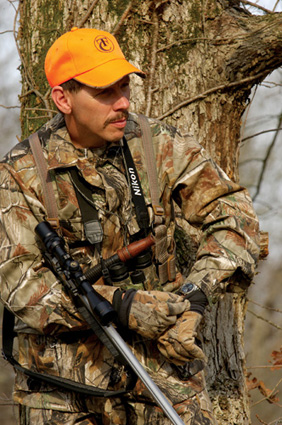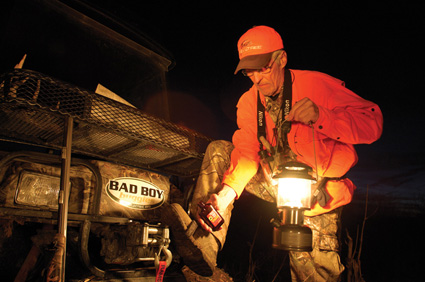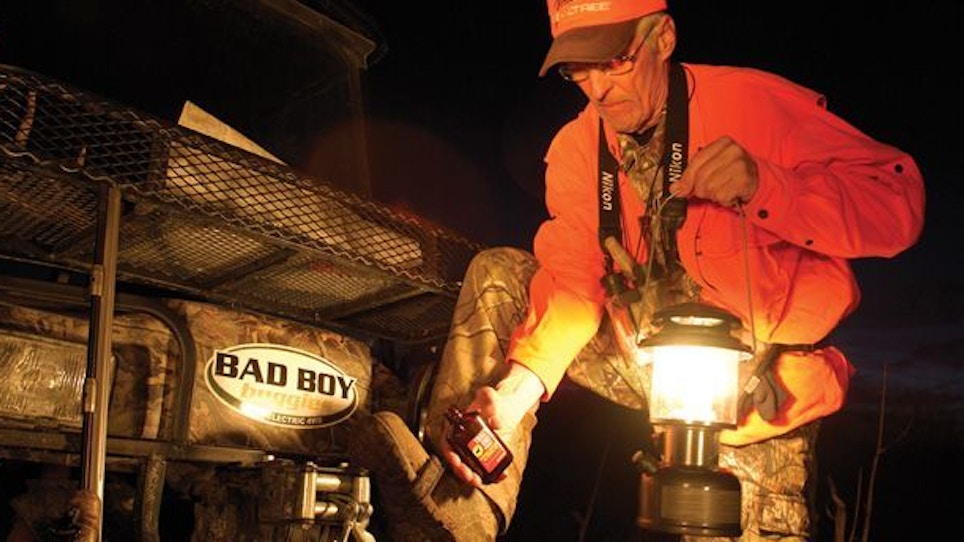 We’ve all heard the legend of an unkillable “noctural buck,” the kind of whitetail serious hunters get all misty-eyed describing and thinking about. Such animals are the nemesis of deer hunters everywhere. Yet they’re creatures greatly admired for their survival senses and their cunning abilities to avoid man and other predators, almost like some alien life form observing humans from another dimension of time and space.
We’ve all heard the legend of an unkillable “noctural buck,” the kind of whitetail serious hunters get all misty-eyed describing and thinking about. Such animals are the nemesis of deer hunters everywhere. Yet they’re creatures greatly admired for their survival senses and their cunning abilities to avoid man and other predators, almost like some alien life form observing humans from another dimension of time and space.
Creatures Of The Night
But are some bucks really that smart to completely alter their lives and only travel at night? Are they so old and educated in the ways of hunters that they can stay completely hidden from human eyes?
“You bet,” says Ernie Calandrelli, noted New York hunter and pro-staffer for Quaker Boy Game Calls. “But nocturnal bucks only get that way from intense hunting pressure — usually the case on public land. It also happens in places where the hunting season is long, and pressure from hunters is unrelenting for many weeks at a time.
“I’m convinced a buck that lives to be 3 ½ years old is a smart, smart animal, especially on public property,” Ernie continues. “He has to be to survive. If that deer lives to be 5 ½ or 6 ½ years old, he has learned so much about his core home terrain, and about how hunters do things in the woods, that he almost is unkillable because he has become like a nighttime ghost. That’s hard to believe for some people, especially today with our advanced hunting techniques and great optics and other products that allow us to be better and more effective deer hunters than we ever thought possible.
“But I truly believe some giant, old nocturnal bucks just can’t be collected. Once in a great while you’ll hear or read about someone — often a youngster or beginning hunter — tagging a gray-muzzle, old buck in a public place where no one thought such an animal could exist,” Calandrelli says. “That’s a fluke, but it sometimes occurs for a neophyte sportsman in a place no one would ever hunt — and that’s where a great, old, smart nighttime buck figures to live during the onslaught of hunters in season.”
Ernie says that sometimes small mini-drives in confined areas of buck cover can produce mature bucks that refuse to show themselves in the day. He has also taken a few heavy bucks he believed were nocturnal on the very edges of bedding areas in the very first or last gray light of day.
Pressure Them Out
Hunting smarter is the key to killing monster whitetails that quickly become nocturnal with the slightest bit of human pressure, says noted callmaker and hunting video producer Mark Drury. Mark and his brother, Terry, know from lifelong deer-hunting experience that any mature buck that caught their scent will vacate the area completely, or become fully nocturnal without the hunters even knowing about it.
“We wait until conditions are perfect, then make our move to a hunting site we’ve scouted and from years of experience know will be the best place to intercept a giant buck,” Mark says. “We don’t go in the area, and don’t want anyone else in the stand site location, until the ideal time is here, which is during the peak of the rut. Then, only during a calm, cold morning, with the wind perfect, do we hunt the spot.
 “If conditions are poor, or it’s warm or windy, we pack up and try another location, sometimes moving completely out of state,” Drury says. “When conditions improve, we move immediately back to the original choice stand. Rarely will we hunt a stand more than a couple times, or we risk contaminating an area and forcing the biggest bucks to go nocturnal. Sometimes conditions never get perfect, and we don’t hunt a spot an entire season, but we’ll hit it the next year.”
“If conditions are poor, or it’s warm or windy, we pack up and try another location, sometimes moving completely out of state,” Drury says. “When conditions improve, we move immediately back to the original choice stand. Rarely will we hunt a stand more than a couple times, or we risk contaminating an area and forcing the biggest bucks to go nocturnal. Sometimes conditions never get perfect, and we don’t hunt a spot an entire season, but we’ll hit it the next year.”
The Drurys’ tactics are unquestionably successful, as evidenced by their many videos of huge bucks collected throughout the country. In the real world of deer hunting, however, not all sportsmen have the luxury of waiting around for perfect conditions before hunting a red-hot spot. Indeed, it’s tough not to climb right up a tree over a bunch of scrapes, or beside a trail full of rubs, the moment you discover the place. But that’s often foolhardy if everything isn’t perfect, because the more you hunt a place or an area, the more deer become aware of your presence and start moving about only after the sun sets.
How To Tag Them
So what’s a hunter to do about the “untouchable” noctural bucks? Just accept the fact that they’ll never be seen, and go on about the business of hunting?
“All whitetail hunters are optimists, or we wouldn’t be wasting our time, effort and money trying to tag ghosts,” says Dan Moultrie, founder of Moultrie Feeders and trail cameras. “Trail cameras establish the fact that there are big bucks on a property, but hunters themselves make such animals nocturnal.
“Tough-to-get deer become that way by being around humans trying to shoot them,” Moultrie continues. “So to harvest a mature nocturnal buck, you’ve got to have special, very refined tactics. First, I’d have my stands hung months ahead of the hunting season, and I’d leave them in place from one season to the next. Next, I’d hunt my very best spots only on opening weekend, during the five peak days of the rut, and the last weekend of the season (especially if it’s bitter cold). Spend any more time in the area and your chances of that deer making a mistake and showing himself during the day are almost nil.
“I’d also never hunt unless conditions were absolutely perfect,” Moultrie advises. “Cool, dry weather, good wind, no full moon. Then I’d hunt from as long range as possible, and sit all day. If you can overlook a mature buck hotspot from 200 or 300 yards, that’s what you should do. The closer you are hunting a mature buck, the more likely you’ll turn him into an after-hours vampire. This is what turns a tough-to-get old buck into an unkillable whitetail myth. And I’m sorry to say there are plenty of them around these days — far more than we’ll likely ever know about.”






